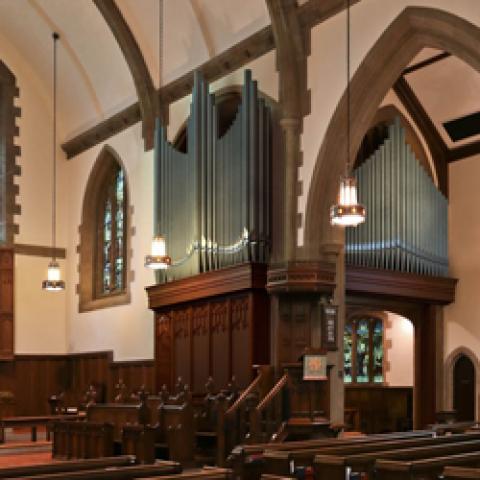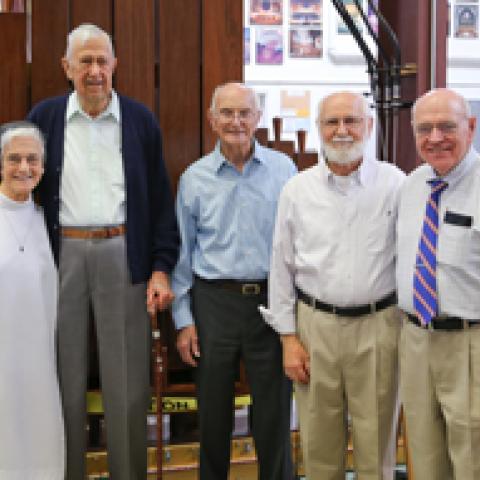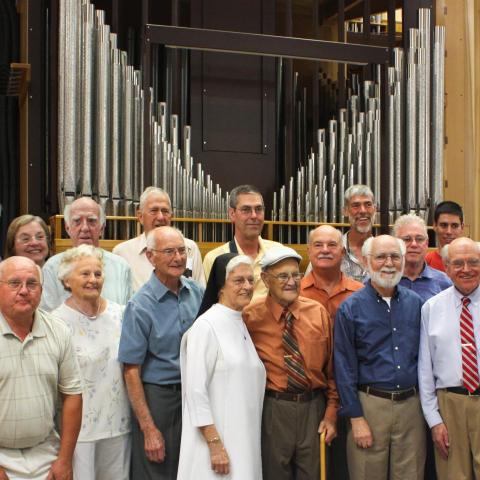
Schoenstein & Co., of Benicia, California, welcomed 150 guests for a factory open house in celebration of the three-manual, 32-rank organ for Church of the Redeemer, Chestnut Hill, Massachusetts.
Among those hearing the organ for the first time were music director Michael Murray and members of the parish with friends from Chestnut Hill, a suburb of Boston. Both Murray and Stuart Forster, who presides at the Schoenstein organ of Christ Church, Cambridge, entertained the crowd with demonstrations of the organ’s tonal variety despite the decidedly non-Anglican acoustic of the factory and the lack of two 32′ stops and some 16′ stops on their way to the church already.
Visitors enjoyed refreshments and a first look at the newly expanded pipe shop with its specialized tools and equipment. Also in the factory for inspection were organs destined for Silverado, San Jose, and Sonoma, California. For information: www.schoenstein.com.
Lauren Lukason, Sean O’Donnell, Michael Murray, Suzy Westcott, Stuart Forster at Schoenstein & Co. open house (photo credit: Louis Patterson)






